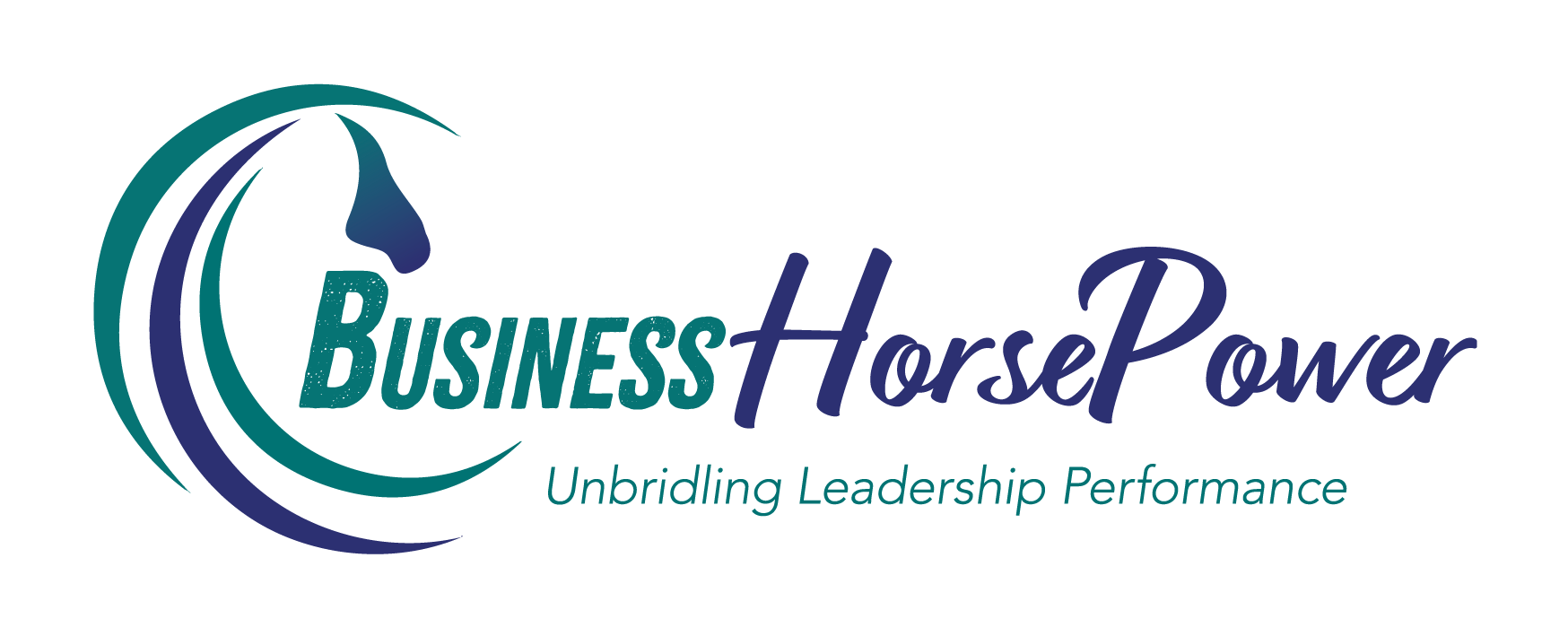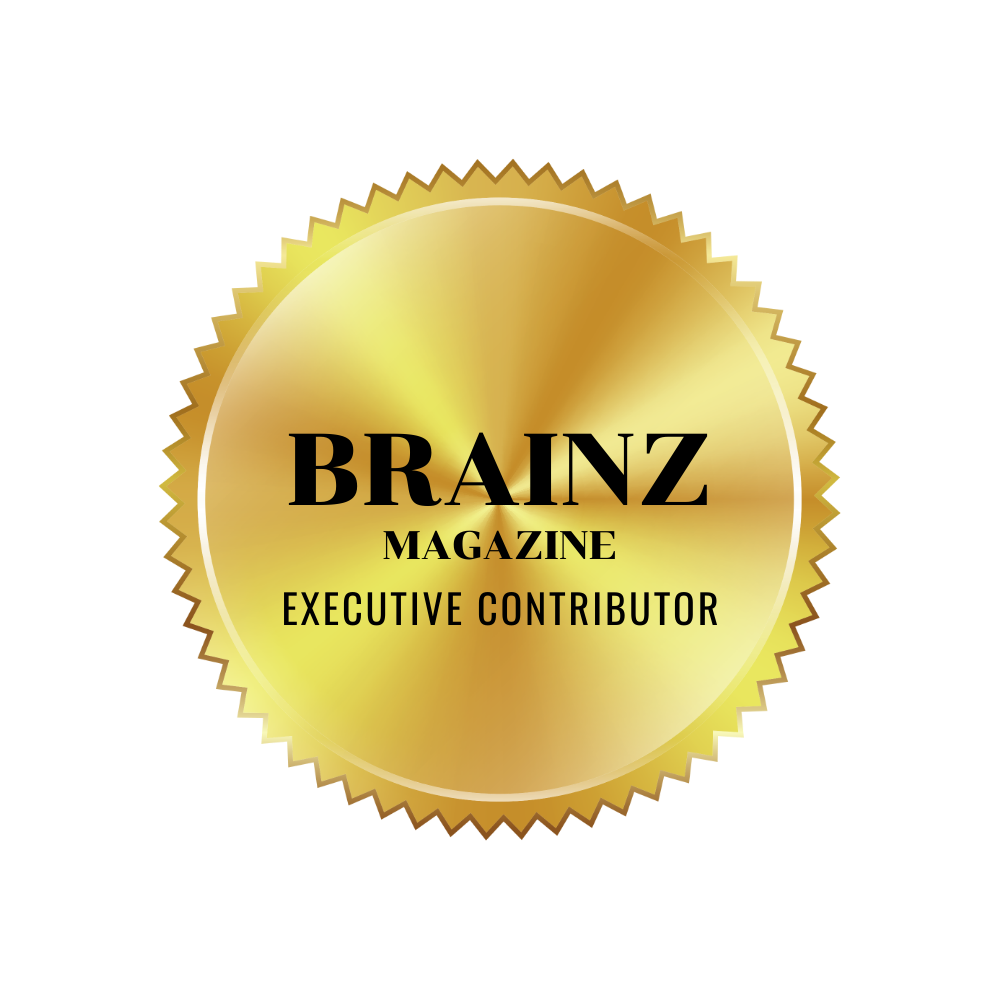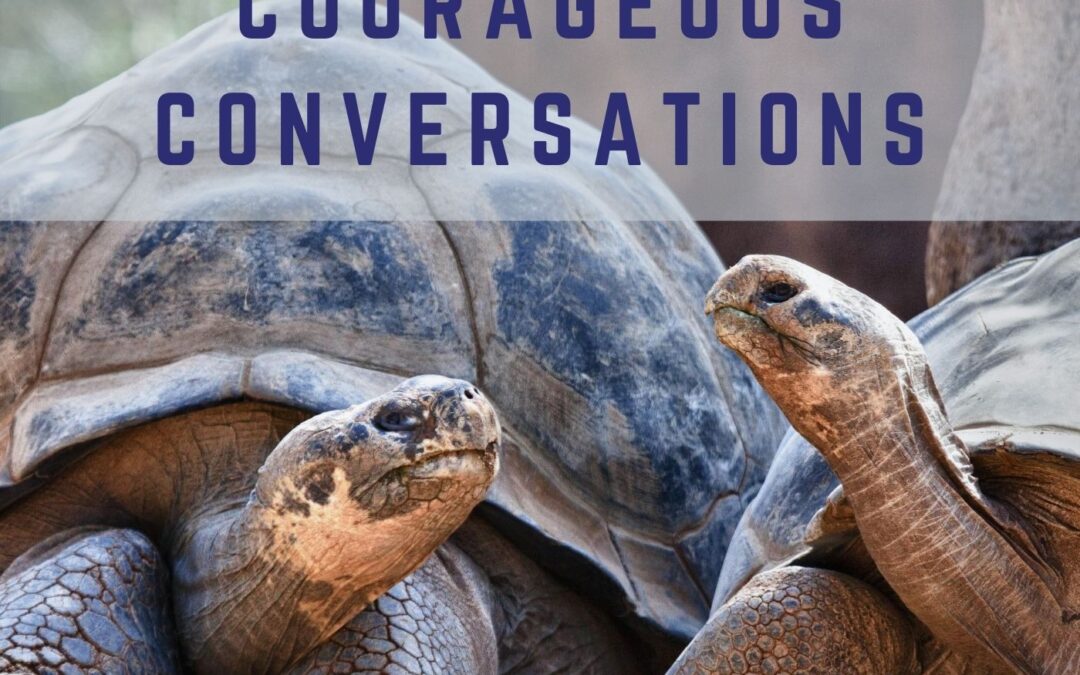
by Julia Felton | Dec 1, 2020
As leaders, we all know that we need to sometimes have difficult conversations. Julia refers to them as courageous conversations.
These are conversations, which, if they took place, would improve life for us and everyone else in our teams. The problem is that fear often causes us to put this off and, as a result, the offending team member continues to provide sub-standard performance, miss deadlines, engage interpersonal conflicts and exhibit ‘toxic’ behaviour.
Andrew and Julia discuss the emotions involved and how important thoughtful, unambiguous and honest conversations are. During their conversation they look at feedback, different personality styles and tapping in to your inner self.
In Julia’s book The Alchemy of Change she gives tips on how to approach courageous conversations using a framework that she calls the 6 C’s to successful Courageous conversations:
Centre: the key that you stay in charge of yourself, your purpose and your emotions energy throughout any courageous conversations remembering to breath.
Clarity: being clear on the reason for the conversation and the outcome that you desire
Curiosity: cultivating an attitude of discovery and curiosity.
Coherence: showing you’ve heard and understood and trying to understand the other person so well you can make their argument for them.
Congruence: when you sense the other person has said all they want to, then it’s your turn
Co-Create Closure: building new solutions.
Communication is essential in business. Learning to read body language and listening is essential to notice any inconsistencies in what is being said.
Show Notes:
Here are the highlights from this episode
- What are courageous conversations (00:50)
- Emotions (2:34)
- The Six-Step Process (3:30) Email us for our fact sheet
- Being Centre and Present (4:19)
- Clarity on Outcomes (5:00)
- Curiosity (5:32)
- Coherent (6:20)
- Congruent (6:44)
- Co-Create (7:06)
- Make Gravitas count (8:46)
- The Power of the Horses to lead the way (9:56)
- Creating Time & Space ( 12:57)
- Understanding Personality Types (15:43)
- The Chair Exercise (18:17)

by Julia Felton | Dec 1, 2020
No one doubts that many of us are struggling with Zoom fatigue and meeting overwhelm as a result of working from home over the last six months. In my experience, many business leaders are not very skilled at running effective meetings. Now that the process has morphed on-line, their skills, in many cases, are definitely not up for the job.
The challenge is that with more and more people working remotely, it is essential that we hold regular meetings to ensure that everyone is kept in the loop and knows what is happening. There is so much conversation that is “lost” when we are not working in close proximity to each other. This “lost conversation” is what I refer to as the water cooler talk. It’s the time when you learn informally how other projects are doing, how other colleagues are feeling, and generally get a sense of what is going on in the business. It’s also a time that we can informally share resources with each other and provide guidance on different approaches to solve problems.
With this mechanism taken away from us, at least for the time being, how do leaders structure meetings to be effective, deliver results, keep team members engaged, and not waste people’s valuable time? One framework that I have found to really work is the EPIC Meeting Framework™, devised by the team at Engagement Multiplier. They use it for all their meetings as it puts an end to pointless gatherings that waste time and slow momentum. Instead, by adopting this simple framework, they have been experiencing a significant increase in team engagement and productivity over the last few months. So let’s unpack this 4 step framework and show you how you can use it in your business.
1) Energy
Why It’s Important: Boosting energy at the beginning of a meeting sets the stage for more productive conversations and, ultimately, better meeting outcomes.
How Do You Do It: Get everyone to speak at the start of the meeting by sharing one thing they’re feeling great about right now (it can be work related or personal related).
The Outcome: Team members will be engaged and start contributing to the meeting leading to better results.
2) Purpose
Why It’s Important: Every meeting needs to have a purpose, as well as clearly defined outcomes, as it is impossible to run an effective meeting unless everyone is clear on why they are there and the outcome required.
How Do You Do It: Distribute an agenda in advance that states the purpose, objectives, and what needs to be true at the end of the meeting, as opposed to simply listing points for discussion.
The Outcome: Team members come prepared and solution focused. Consequently, meetings become faster and more efficient when the focus is placed on outcomes.
3) Insight
Why It’s Important: During the exchange of ideas and perspectives, new opportunities emerge that create transferable insights. Sharing these insights amplifies the value and productivity of any meeting.
How Do You Do It: At the end of the meeting, ensure that everyone shares at least one unique insight or learning they’ve derived as a result of attending.
The Outcome: Being able to capture opportunities and connections in real time between people can help spark more innovation, and amplify the value of the meeting for all attendees.
4) Connection
Why It’s Important: Getting team members aligned behind a shared purpose ensures everyone is on the same page and builds connection within the team. Team members are more confident their inputs and efforts will be appreciated, so are more willing to speak up and express their opinions. Culture and purpose are thus reinforced.
How Do You Do It: By encouraging adoption of these habits and the structure for the meeting.
The Outcome: Barriers to progress caused by poor communication and lack of direction are overcome and the team adopts a much more agile culture towards working.
So my invitation to you as leader is, go and try the EPIC Meeting Framework™ and let me know what is does for your next meeting. I’m sure you will be pleasantly surprised by the results, and the increased levels of engagement that you get from your team members.

by Julia Felton | Oct 27, 2020
In this episode we talk around boundaries and what they mean especially in the workplace and for us both and how the horses have been masters at teaching Julia all about boundaries.
The word boundary is a word in common use and for clarity Julia defines it as “a limit, something we will permit or not into our lives”. Our boundaries define what type of person we are and therefore the opportunities that we’re going to let in our life. Often a boundary can be imagined like a fence that we’ve got around ourselves, and it’s our responsibility to ensure that that fencing is in good repair, because otherwise we’ll let things into our lives that we don’t really want.
Our physical boundaries are probably the ones that we’re most familiar with, in terms of people that we let into our personal space. There also mental and psychological boundaries as well as spiritual boundaries. So, a boundary is really shaping what we’re going to allow into our lives and why is that important? It helps create real clarity about what we want into our lives and what we don’t want into our lives.
Julia explains the problems about not setting boundaries by recalling stories with the horses. After all boundaries are there to protect us and what clients get out of working with her horses.
Andrew then shares a workplace story which leads on to a discussion around the benefits of contracting.
Julia and Andrew then discuss how anger and resentment can build up in personal relationships before summing up
Show Notes:
Here are the highlights from this episode
- What are boundaries? (00:45)
- What are the different types of boundaries? (1:37)
- Boundaries are there to protect us (2:38)
- The Aha moment – learning from the horses (3:55)
- Contracting in the workplace (5:52)
- The box model of contracting (6:20)
- Bracken teaches Julia about trust (7:12)
- Rules of the game (11:38)
- The working from home trust problem (15:15)
- The problem of not speaking up (17:11)
- Having honest conversations (18:24)
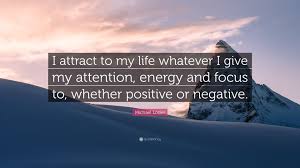
by Julia Felton | Oct 11, 2020
With so much going on in our lives how do we get anything done, and prioritise what needs to be accomplished. In this article I look at the key components that help ensure an idea moves from just that, an idea into action. These are the exact same techniques that I used to help me get my lovely ponies Bracken and Thistle under saddle.
“Daily routines, superficial behaviours, poorly prioritized or unfocused tasks leech managers’ capacities—making unproductive busyness perhaps the most critical behavioural problem” in business today, contend Heike Bruch and Sumantra Ghoshal in their book A Bias for Action.
For so many of us—whether CEOs for major corporations, small business owners or solo-entrepreneurs—there is a fundamental disconnection between knowing what should be done and actually doing it. Calling this disconnection the “knowing-doing gap,” Stanford University researchers Jeffrey Pfeffer and Robert Sutton pose the question: “Why does knowledge of what needs to be done frequently fail to result in action or behaviour consistent with that knowledge?”
Is there anyone in business today who hasn’t wondered the same thing?
The answer, argue Bruch and Ghoshal, is both simple and profound. They sum it up with the term “willpower.” The problem they say is not that managers’ time is sliced, but that their intention or “volition” is sliced as well.
Getting things done requires two critical components: energy and focus.And both are at risk in the modern workplace. Building a bias for action in yourself and your organization requires developing and reinforcing the skills to become a “purposeful” or “volitional” manager. These are people who can consistently achieve their objectives by making an unconditional commitment to their goals and then leveraging the power of that intention to overcome the obstacles in their way, whether their own doubts or the bureaucracies within their organizations.
“Purposeful action-taking depends on engaging the power of the will,” according to Burch and Ghoshal. “Not only does willpower galvanize your mental and emotional energy, it also enables you to make your intention happen against the most powerful odds: distractions, temptations to move in a different direction, self-doubt, and negativity. Willpower is the force that strengthens your energy and sharpens your focus throughout the action-taking process.”
Burch and Ghoshal identify four key steps that form the basis of successfully taking action:
Form your intention. To work, your goal must appeal to you emotionally and be something you can define concretely enough so you can clearly visualize its success.
Commit unconditionally to your intention. This is the key step, which the authors liken to “crossing the Rubicon,” Caesar’s irreversible decision that led to his conquest of Rome.
Protect your intention. Once you have made your commitment, you have to protect it from forces both within yourself and your organization.
Disengage from your intention. Unlike Caesar, your Rubicons aren’t life-and-death affairs. You have to define your “stopping rules,” the point of success—or failure—from which you walk away and take up the next challenge.
From the commitment comes both the emotional energy and the focus that are critical to your success. In short, the process of getting things done in business is pretty much the same as in any other aspect of life: The only things that get done are those that you genuinely believe in, and believe will get done.
So just think about your day and how you can stay focused and set up for success. I’ve stopped taking calls when I’m focusing on a specific task and it is incredible how much more I get done. It tests me as just whilst writing this article a client called me. At first I wanted to take the call but then realised how my lack of focus in that moment would not be serving anyone. So I “missed” the call and will call them back once I’m finished.
How can you stay focused on the in hand and not get distracted by all the other activities happening around you? I’d love to hear how you cope.

by Julia Felton | Aug 4, 2020
Business stakeholders—customers, investors, and team members—are now demanding more from the businesses they “work” with. Millennials and Gen Z want to know that the businesses they engage with have a social purpose and are behaving in a responsible manner. This societal accountability is changing the face of business and how leaders behave.
A number of recent surveys from McKinsey research have identified three traits that are becoming leadership imperatives to respond to this growing demand for social accountability.
Transparency
As consumers are more and more demanding that they see the provenance of items they purchase to ensure they align with their values, leaders are being forced to rethink their supply chain and the materials that they use. Especially as some two-thirds of consumers around the world say they would switch, avoid, or boycott brands for their stances on controversial issues.
Given that millennials will make up 75% of the buying population by 2025, and 52% of them say that they always research background information before buying goods or services—compared with 45% of Generation X consumers and 41% of baby boomers—the onus on leaders to pay attention to the ripple effect their business is creating is significant.
One way some companies are seeking to be more transparent is by adopting B-corp status. In order to become a B-corp, a company must pass an assessment that measures its impact on its employees, customers, community, and environment. Ben & Jerry’s and Patagonia are two such companies that have shifted to becoming B-corps in a bid to be more transparent and socially responsible in how they operate.
Cognitive Empathy
In 2015, the World Economic Forum predicted that emotional intelligence would be one of the top 10 skills demanded by employers by 2020. Emotional intelligence (EI) relates to qualities such as empathy and curiosity, the so-called traditional business soft skills that enable effective communication and relationship building.
However, it turns out that there is more than one type of empathy. Emotional empathy involves:
- feeling the same emotion as the other person
- feeling our own distress in response to their pain
- feeling compassion toward the other person
This is distinct from cognitive empathy, which seeks to recognise and understand another person’s emotional state. When leaders practice cognitive empathy, they practice taking the perspective of another person. In essence, you imagine what it might be like to actually be this person in their situation and put yourselves in their shoes.
For leaders to be socially accountable, it is essential that they practice this type of empathy, as it enables them to fully understand and appreciate the perspective of all their stakeholders so they are able to make better decisions, as they consider the holistic impact of what they are doing.
Purpose and Values Driven
Consumers are also demanding that business recognizes the impact it has on society and that it aligns the 3P’s—purpose, profit, and planet. No longer is it acceptable for CEO’s to focus on short-term gain to line their pockets. Rather, business leaders need to take a longer term approach, which means no longer being driven by the 90-day reporting cycles of the world’s stock markets.
In his new book The Infinite Game, Simon Sinek refers to these leaders as being infinite in their approach, as they understand that long-lasting success only occurs if they build long-term value for customers, which translates into healthy enduring for the business.
Salesforce CEO Marc Benioff is an example of an “infinite leader” who understands the importance of social accountability, as he always strives to ensure that the company lives up to its values of trust, innovation, equality, and customer service. “There will be times when prioritizing values, especially trust, will come at the expense of profits. In the short term, that is,” he is quoted as saying. “But the money your company makes in any given quarter will never be more valuable than the trust you stand to lose over time.”
What do you need to do to shape your leadership, so that it meets the needs of all stakeholders and recognises the social accountability that consumers now demand of business?

by Julia Felton | Jul 21, 2020
Disraeli said: “what we anticipate seldom occurs, what we least expect, generally occurs.”
That is the basis for this episode on our comfort zone.
Andrew and Julia discuss the comfort zone model. Quite simplistically, all of us have a comfort zone that is the area in which we feel safe and secure. And these are kind of the activities we do each and every day, and quite comfortable doing them then at the next time. level we have the growth of the learning zone.
But once we step out of our comfort zone, we move into the growth and learning zone.
And that’s where we are, we acquire new skills and we develop and effectively we expand. And then finally, on the outside ring, if you imagine this is kind of three concentric circles:
Inner ring is our comfort zone
The next ring is the learning zone
The outside ring is the fear zone
Show Notes:
Here are the highlights from this episode
- The Three Concentric Circles of the Comfort Zone (1:00)
- Using the horses to demonstrate (4:45)
- Being prepared for the unprepared (8:42)
- What gets you there wont keep you there (8:55)
- Physiological safety (9:33)
- Andrew’s training tips for public speaking (11:45)
- Confidence (12:42)
- Susan Hef quote 12:53
- Building fear quote (14:00)
- Hierarchy of needs (16:09)
- Being in the moment (18:34)
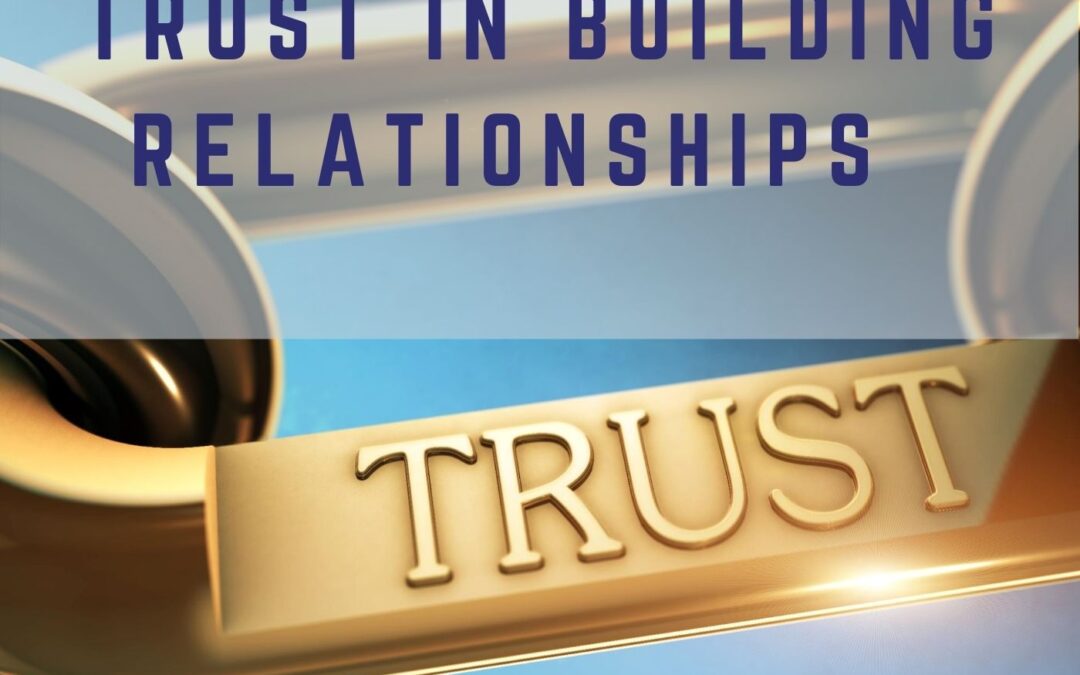
by Julia Felton | Jul 7, 2020
In the middle of this COVID pandemic, it is becoming apparent that trust is really important.
Julia starts by discussing the Edelman Barometer which measures trust usually on a yearly basis.
At the beginning of 2020, the Edelman barometer was showing trust at some of the lowest levels. And this is trust with governments, NGOs and businesses. At the start of the year society had higher levels of trust with business than with government organisations with the media not scoring high.
Trust has a magnetic quality and can make the difference in business.
A recent second Edelman survey in April during COVID-19 there was a reversal with businesses coming out worse on the trust scale and governments came out best.
Perhaps there is little bit of a paradox there maybe because we’ve been in a situation where people have been frightened of being under threat. We have looked to the government to make some decisions and so far the decisions have been pretty decent. And as a result, people are now beginning to trust the government that they could actually do something well, whereas businesses ironically, haven’t done such a great job and their trust levels have dropped. Julia and Andrew muse on whether it is because some people have had experience of poor leadership within the businesses they’ve been working for, and how those businesses have been dealing with furloughing employees etc.
Then they move on to discuss why it is important to have trust in yourself to build confidence in the decision making process. How to connect with people and build up trustworthiness.
As always horses play an important role in the work that the duo do and mention is made of the Trust Mirror mentioned in Julia’s book Unbridled Success linking back to the way horses think and drawing parallels.
Andrew recalls Gloria Barczak from Northeastern University, in the US. She talks about how teams , build trust. There are two ways the effective and the cognitive.
This leads on to building gravitas and why it is important and how to develop and use it.
Trust is such an important commodity that John Maxwell sees it as a bit of a piggy bank, putting money in the piggy bank, aka trust in the piggy bank. But break that trust and you just shatter everything. So that’s why we’re always talking about how it can take a long time to build trust but that it’s quick to break.
Which leads on to Patrick Lencioni and his Five Dysfunctions of a Team, the first thing is a lack of trust. And if there’s a lack of trust, then just everything breaks down.
One simple way to build and maintain trust in the workplace is the use of contracting so everyone understands what is required and when.
Finally it’s about sharing stories because we all relate to other people we build trust when we know more about our colleagues. If you are able to share some personal details or snippets about your life, it just makes you more relatable to other people. And then you’ve now got some shared experiences and when you’ve got those shared experiences, now you’ve got something to talk about. t’s a great way to build trust quite quickly.
Trustworthiness cannot be faked or copied. It’s the fundamental underpinning of everything in business and Andrew follows Janet Murray who talks about building trust and building client bases. People won’t buy from strangers; most people need at least seven or eight touch points before they then buy.
To conclude the duo quote from Stephen R. Covey’s book, The Speed Of Trust: ’without trust relationships and businesses falter.’
Which sums up so well this podcast episode. Without trust, there is no business there are no relationships with people, and everything is going to start struggling. Trust really underpins everything that we do.
Show Notes:
Here are the highlights from this episode

by Julia Felton | Jun 16, 2020
Have you ever thrown a pebble into a still pond or lake and caught the moment perfectly? By that, I mean as the pebble hits the water it creates a series of concentric circles that ripple out from the centre.
It is beautiful when you get it right and that’s what Julia and I call the ripple effect.
As we all go about our daily lives, whether it be at home or work, each and every one of us creates a ripple around us. And the thing is, most of us are pretty unaware of that.
We call it the impact ripple and it aligns with the imagery of the pebble causing all those ripples.
Now we have created the image in your mind, it is easy to see how it effects our relationships.
If we think about where the stone actually touches the water, that’s the effect of the ripple on ourselves. We are the centre and what we radiate out needs to be thought about from a leadership perspective.
Meaning we are impacting ourselves. If we extrapolate that to the next level, in a business sense with your teams, or your family, you are directly impacting the people directly around you and now we know we can think about the consequences both positive and negative as the potential of the cascade to influence our colleagues, customers, clients or suppliers, maybe even your shareholders, should not be underestimated.
In this podcast we discuss the importance of understanding your personal ripple, the emotions and how to adapt your leadership style by being self-aware about your personal style.
We consider what happens if you’re unaware of the impact you’re having and how it manifests itself, which could be a fall in productivity across your organisation.
It is about connecting and understanding the ripple and we then introduce what we can learn from the horses. They are perfect teachers.
Have you witnessed a boss that suddenly decides to walk the floor wreaking havoc causing a trail of negative emotions? In this podcast, we describe it as a wake and turn to the horses to demonstrate how leaders can improve their personal ripple effect by getting to know their self.
We then move on to talk about being in the present. What does that mean?
When a leader is in the space of being really present, that’s really important because it’s the space where one can really connect. The horses are very good at doing it as they live in the present moment. Horses don’t walk around wondering, oh, I wonder what happened yesterday or, you know, I wonder what I’m having for dinner tonight. They’re actually living right now in the present tense. So the first part of awareness for any leader, is really noticing and sensing how they’re feeling in that moment.
It comes down to instinct and gut feeling and knowing that once you are aware of how you are feeling and being really good at understanding the present, then you move into the next step.
That means we have to know how we communicate and show our gravitas and how to channel emotions.
When our clients come and work with the horses, they really get in to the present with the horse immediately.
Some maybe nervous but as Paul Ekman, an emotion researcher thinks, being self-aware is such a powerful skill to have and is influenced by the way we breathe and the horses powerfully demonstrate this. Another way of getting immediate feedback in the moment is the 360° feedback as well as doing a personal SWOT assessment.
Any nervous energy has to be channeled we consider techniques for breathing that will really help you as a leader. Julia explains how box breathing helps her.
We have to make sure that we remain confident, trustworthy and show we are in control. We discuss the need to build rapport and understand body language ensuring that if, in a Covid-19 world, we can’t use our hands to shape we use our eyes, we use smile, we use our heads. We look at how to break down the barriers that body language causes, such as having good eye contact – that’s vital. It’s building rapport.
By listening to the podcast we would ove you to walk away with today, knowing how to make a positive impact.
Do you know if you leaving people with a great impact – or are you leaving them with a negative one?
Show Notes:
Here are the highlights from this episode
- The Impact Ripple Concept – what is it? (1:04)
- How the impact ripple is felt on ourselves and in our organisations (1:32)
- The importance of understanding self-awareness (2:27)
- Impact of getting your gravitas right (3:43)
- The leadership wake concept (4:24)
- How to influence (5:25)
- How the horses help (7:00)
- The Awareness Wheel (7:36) Email us for a copy
- The importance of being present (8:00)
- Gut instinct and intuition (9:14)
- Being present with the horses (10:50)
- Who is Paul Eckman (11:28) https://www.paulekman.com/
- The importance of breathing (12:14)
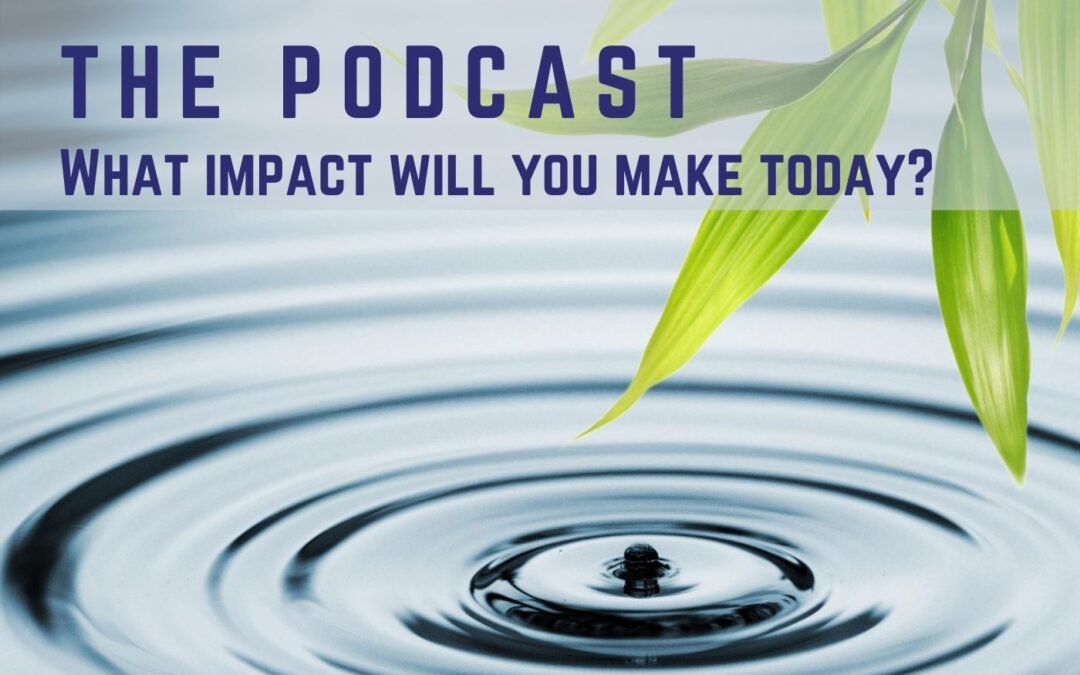
by Julia Felton | Jun 2, 2020
Welcome to IMPACTFUL, the podcast. We are delighted to be here with you today.
Who is this podcast for?
This is your go to resource if you are a business owner, business leader, entrepreneur or executive who knows they want to make a real impact in the world and leave a positive legacy. It doesn’t matter if that dream is big or small – but we will encourage you to think big – everyone of us leaves an imprint on the world. What will yours be.?
What is it about?
In this podcast we will be sharing with you strategies and tactics to help you become the leader you have always wanted to be so you can make a real difference in the world. Each podcast will be full of actionable steps you can take and implement immediately.
We’ll also be interviewing guests to learn from them about their legacy and the impact they have been making in the world.
Who are your hosts?
I’m Julia Felton and I am the Founder of Business HorsePower. I’m passionate about igniting the possibility and hidden potential in 10,000 business owners, leaders and their teams. Through throwing away the rule book and challenging the status quo we create businesses that deliver impact and influence, whist also making a great income. Our business principles are based on the principles of nature and herd dynamics where collaboration, community and connection reign.
I’m Andrew Palmer and I’m the managing director of the gravitas matrix where I’m a communications coach, and I help business leaders and entrepreneurs scale up through the power of content creation, and presenting with confidence, authority and gravitas. By understanding audiences, identifying their needs, and modifying body language you really can become an influential leader.
We want you to discover that you can make a massive impact in the world whilst still creating a great income if you apply the laws of nature and the herd to building your business. In nature there is abundance and generosity. Everything is inter-connected and inter-dependent. Nature understands the principles of IMPACT.
Show Notes:
Here are the highlights from this episode:
- Impactful the Podcast what is it all about? 00:30)
- Julia Introduces herself (00:55)
- Andrew Introduces himself (1:31)
- Nature what the horses teach us about impact (2:10)
- What are we all about (2:40)
- Nine Essential Traits of being IMPACTFUL (3:40)
- System thinking (5:28)
- The Gravitas Matrix Model (6:15)
- Horses and rapport, listening and leading from front, middle and back (7:31)
- Empathy (10:31)
- Culture (10:45) www.nationalcentrefordiversity.com
- Emotional Intelligence identified as one of the top ten leadership skills (12:45)
- Why silence is golden (13:50)
- Reframing leadership (14:15)

by Julia Felton | May 30, 2020
There has been a lot written about the power of business having a purpose and how with a compelling purpose business can become a force for good, and yet many leaders I speak with really don’t fully comprehend what purpose is and why more than ever it is a pre-requisite for business survival.
Simply put the different between a vision (or mission) and purpose is emotion. Vision and mission statements are logical, they talk to the head part of the business. Purpose is emotional and talks to the heart of the business. So whilst vision or mission articulates goals and tactics for achieving those goals, purpose defines the essence of the business – why it exists, who it exists for and how it makes the a difference in the world.
And continuing using the metaphor of head and heart, whilst the head gets things done (20th century leadership) it is the heart that is essential to pump blood around the body, and so enable the head to operate. This is increasingly why we are seeing a paradigm shift in leadership and purposeful leaders know that the old control and command structures are not going to appeal and be successful in the more collaborative 21st century where people are seeking more purpose and contribution from their work.
A PURPOSE DRIVEN BUSINESS
Many might argue that it is a waste of time defining the company’s purpose because operating results have been fine up to now, and this is just another fad that is taking us away from delivering results. The problem is that the evidence is compelling as to why becoming a purpose driven business is essential for 21st century success. The benefits are not only commercial but also include improving the culture and the well-being of team members
JUST SOME OF THE BENEFITS INCLUDE:
- Customers Want It – 73% of consumers have stated they would change brands if a different brand of similar quality supported good causes
- Buyers Reward You – 80% of the general population would rather pay more for products and services produced ethically
- Employee Well-being – 88% of team members say they feel more fulfilled working for a business that is making a difference
- Increased Productivity – when team members are inspired by a compelling purpose they generate 225% more productivity than team members who are merely satisfied with their role
- Improved Retention and Employee Loyalty – team members who find their work rewarding and impactful report being 2.8 times more likely to stay with a company
- Easier Recruitment – 93% of employees want to work at a company that cares for them as an individual.
- Increased Revenue and Growth – in the past 3 years 85% of purpose driven companies showed positive growth whilst 42% of non-purpose led companies showed a drop in revenue.
CHANGING COMPANY CULTURE
So why wouldn’t a company want to become purpose led and help contribute to the triple bottom line of people, performance, planet? Because it’s tough. Creating a purpose driven culture demands time and resources. This is not some quick fix that can be rolled out and forgotten. Purpose needs to become imbued into the DNA of the company and impact everything that the business does. It’s not just some fancy words on the wall, but rather it demands a culture shift that helps foster an environment where people’s hidden potential can be unlocked. It helps team members understand why they work for the business and clearly articulates for them the contribution that they make. And of course for the purpose to survive the company must adopt behaviors that align with that purpose.
It is the leaders role to activate the purpose within the business and galvanize the team members to come along. Through their behaviors day in and out they help inspire and motivate the team and when they do the result is a highly engaged and productive workforce. Team member well-being improves as they feel more valued in the business and also because they understand the context in which the business is operating and how they contribute to this.
Creating a purpose driven culture really is a win-win for both the business results and the many business stakeholders, but implementing this is not for the feint of heart, and should not be undertaken without a solid commitment to see it through.


